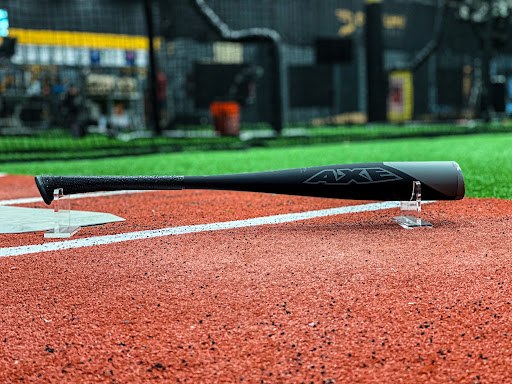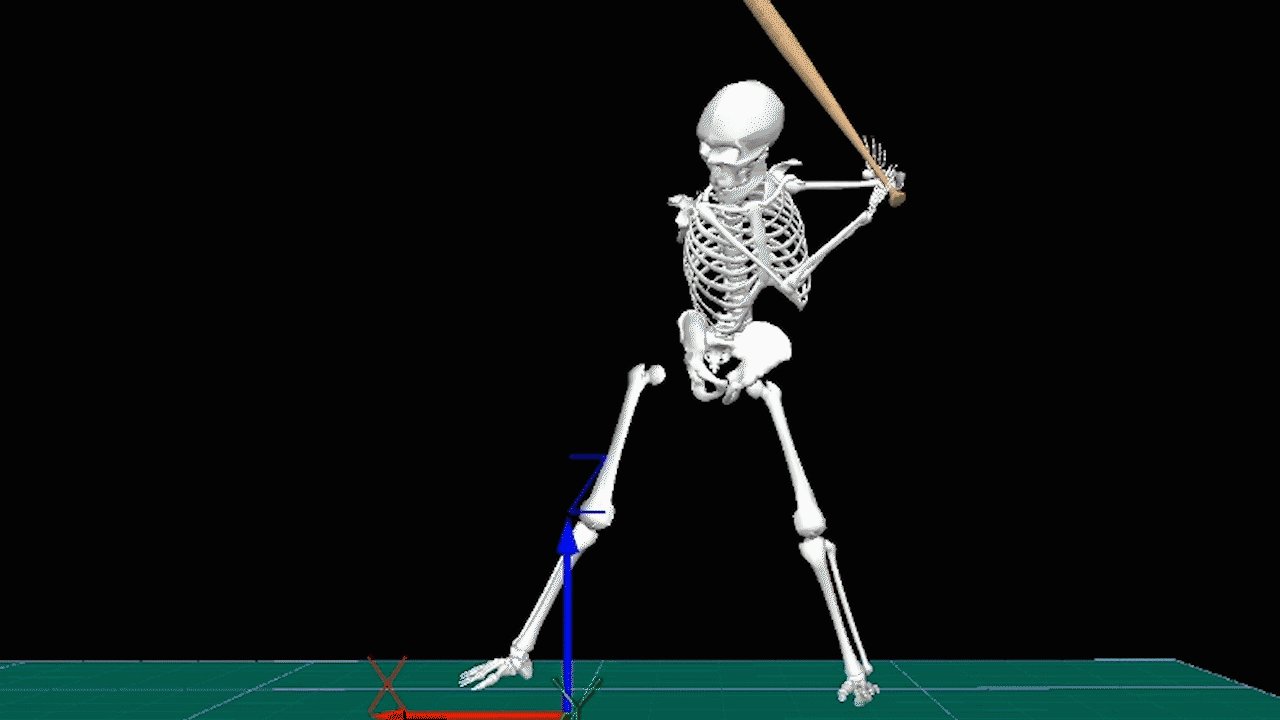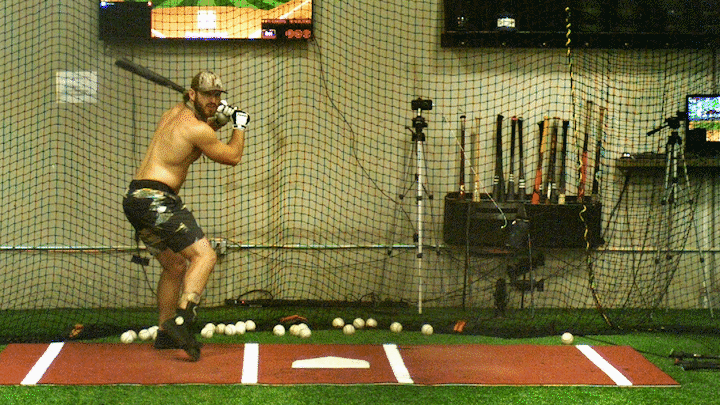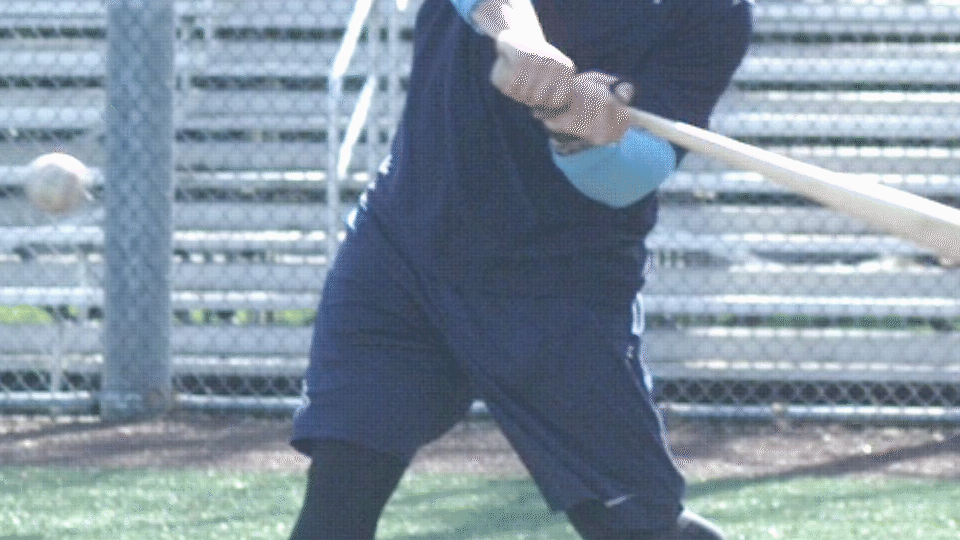How the Axe Short Trainer Can Make You A Better Hitter

Written by John Soteropulos
It’s beautiful, isn’t it? Weighing in at 28”/31oz, the Axe Short Trainer is one of our smallest training tools, but don’t let the size of this guy fool you.
We’ve had a ton of success implementing the short bat with our in-gym and online athletes, and it has quickly become one of our most valuable training implements. If you or any of your hitters struggle with the following…
- Rolling over
- Low attack angle and chopping balls into the ground
- Trouble hitting the ball deep or staying on plane
- Poor posture, early extension, and/or lack of side bend
…then the short bat is a must-have for your hitting toolbox.
What is the short bat, how does it work, and what are some of the best drills to use it with?

Foundations of Hitting
30 modules teaching you everything we know about hitting and hitting mechanics.
In this blog post, I’ve set out to answer these questions about the short bat—and many more.
DEFINITIONS
To fully appreciate the benefits of the short bat, we have to first get some definitions under our belt.
Torso Side Bend: The angle of the torso bending left or right (laterally), where 0° is standing straight up and down with no bend either way.
Vertical Bat Angle: The angle of the bat with respect to horizontal (i.e. the ground) at contact. 0° is perfectly parallel to the ground and 90° is perpendicular to the ground.
Maintaining Posture: Replacing torso forward bend with torso side bend. A hitter will create a specific amount of torso forward bend at foot plant. Ideally, he should produce the same degree of torso side bend at contact (or more), depending on pitch height. We refer to this as “maintaining posture” or “replacing forward bend with side bend.”

Early Extension: When a hitter’s pelvis pushes towards home plate early during the pelvis rotation phase and/or when a hitter’s torso pushes forward and begins to stand upright during the stride/swing phase. Both of these can cause hitters to lose their posture and lack sufficient torso side bend at contact. We refer to this as “losing posture” during the swing.
HOW DOES THE SHORT BAT WORK?
Because of its shorter length, the sweet spot of the short bat is closer to a hitter’s body than the sweet spot of a regular-sized bat. The decreased length forces hitters to add more torso side bend when swinging with the short bat. The following three visuals illustrate these differences. I recommend watching and studying each visual 2-3 times…at least.
What we are seeing is that hitters are forced to add side bend when using the short bat. This makes it an extremely valuable tool for players who struggle with early extension and/or poor posture during the swing phase. Additionally, the short bat is great for hitters who have trouble elevating the low pitch.
You might also notice that the short bat has a more negative vertical bat angle (farther away from 0°) at its contact point than a regular bat. This is most likely a function of the additional side bend hitters add to be in a more powerful, connected position at contact, but it could also be another adaptation the short bat helps a hitter achieve! A still-frame side-by-side helps to visualize the differences even more clearly.

Become the Hitter You Want To Be
Train at Driveline
DRILLS
Want to implement the short bat into your training routine, but don’t know where to start? Pick up one up here and try these drills.
Offset Open – Short Bat With Plyo Ball ®
Purpose: Maintain posture throughout the swing phase.
Doing it Well: Hitter will hit the Plyo Ball ® with flush line-drive contact through center field. Effectively replacing forward bend with side bend allows the hitter to move the short bat through the zone properly with a clean bat path and square up thePlyo Ball ®.
Common Mistakes: Hitter will hit the Plyo Ball ® with a low launch angle to the pull side of the field. Because the hitter loses his posture, his bat path will come down and around and he will have only a small range of contact points to hit the Plyo Ball ® flush. This flush contact will usually occur on the ground to the pull side.
Check out other ways we use hitting Plyo Ball ®, or hitting weighted balls, for bat path.
Low and Inside Pitch: Hit Line Drives to Center Field
Purpose: Maintain posture and add torso side bend.
Doing it Well: Hitter will hit line drives from gap-to-gap and get the feel for adding side bend during the swing to stay behind the baseball.
Common Mistakes: Hitter early extends and isn’t able to get the barrel to the low pitch. This results in mis-hit flares to the middle/opposite field and a lot of ground balls.
GET IN TOUCH
Ready to get to work? In-gym and remote options are both available.
- Athlete Questionnaire: Fill out with this link
- Email: [email protected]
- Phone: 425-523-4030
Comment section